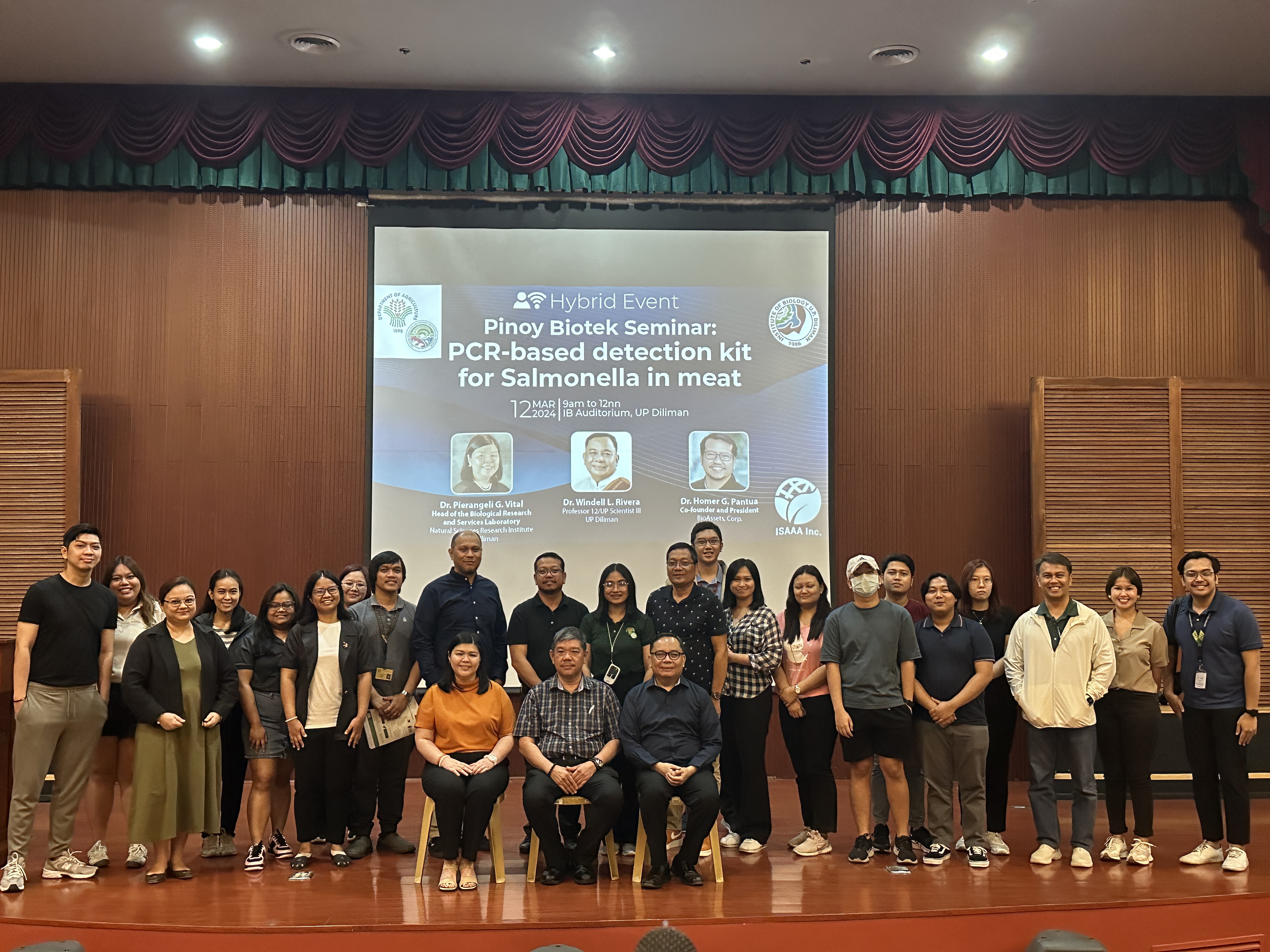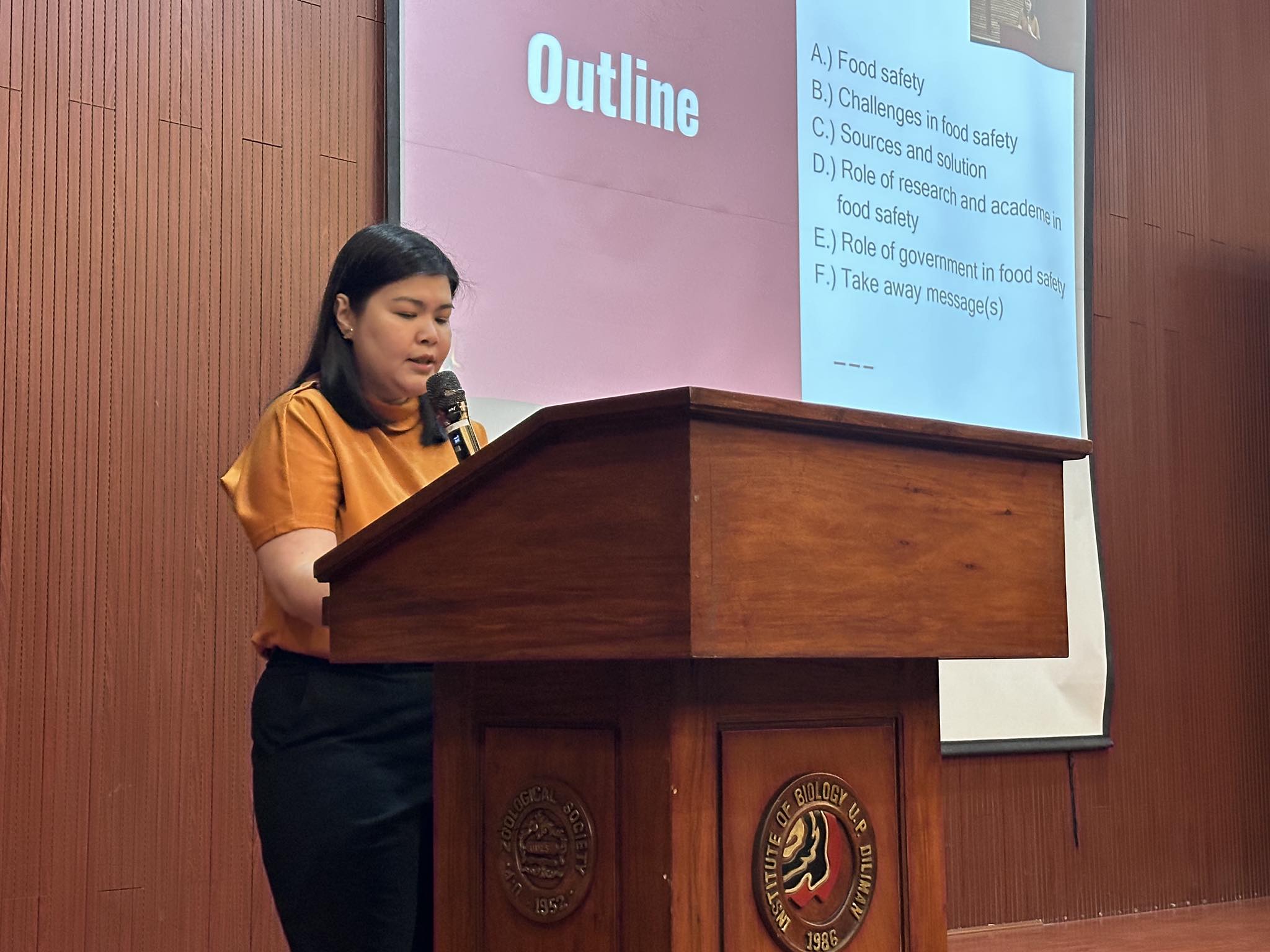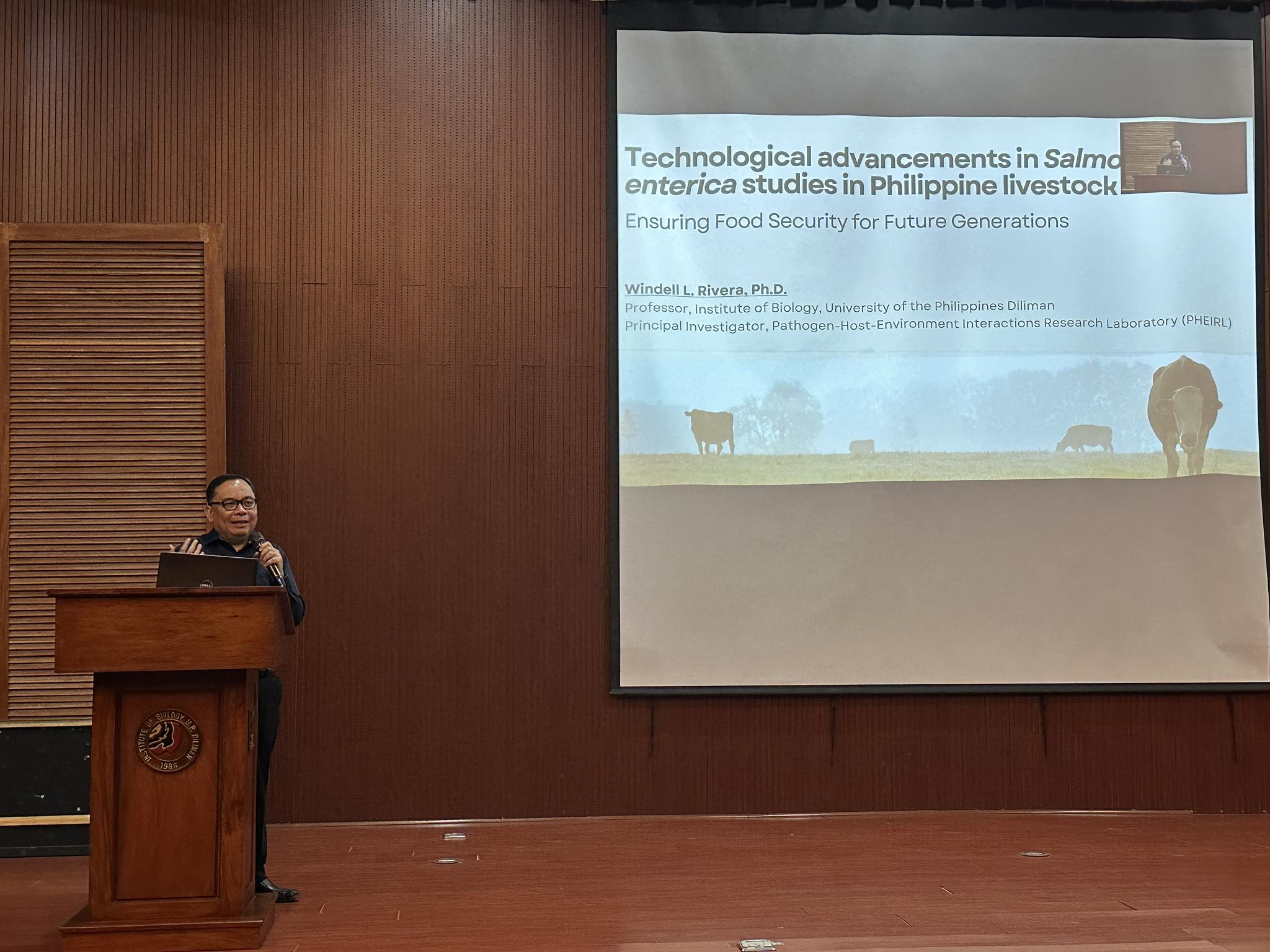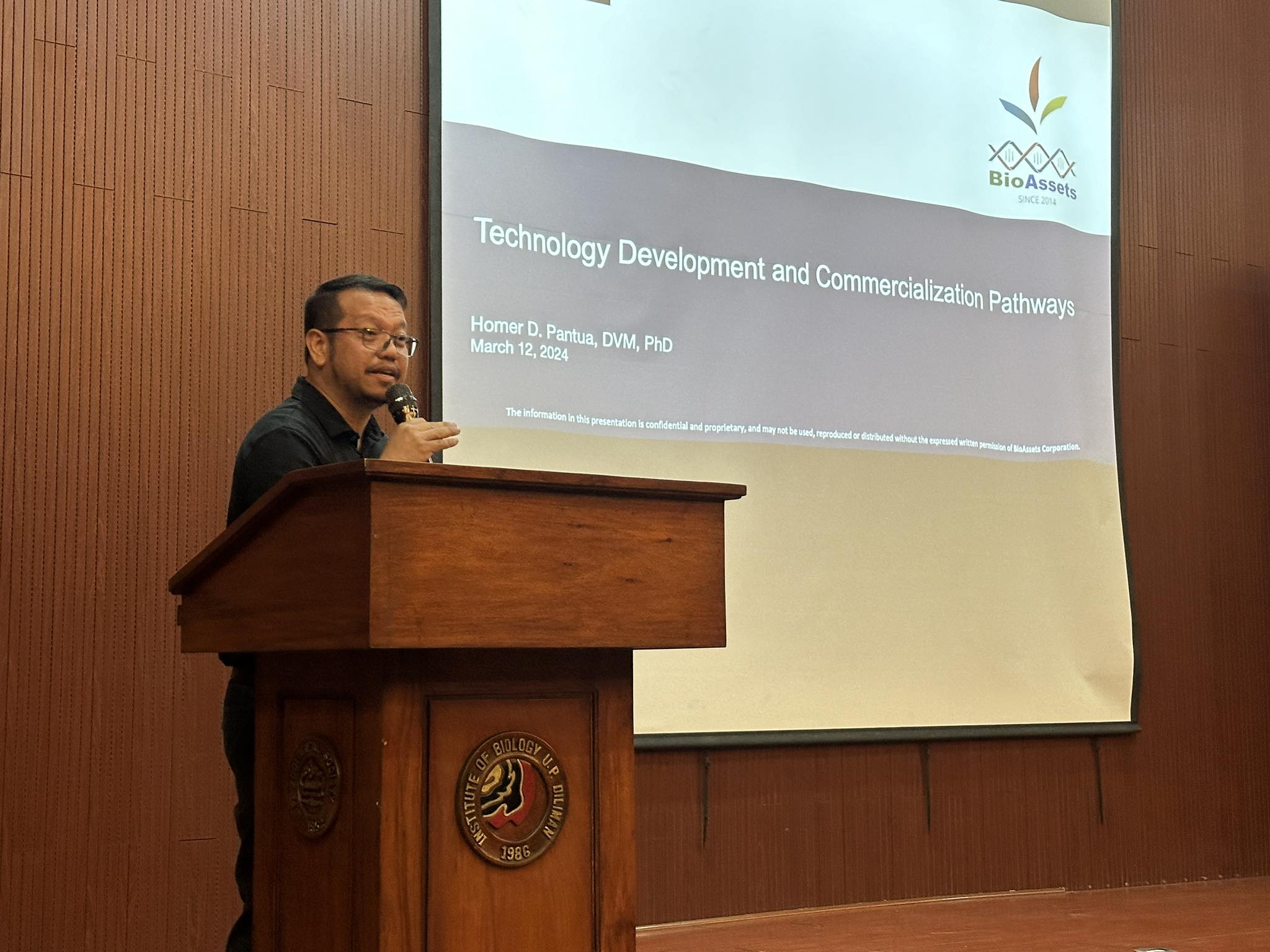Technologies for Salmonella Detection to Boost Food Safety in the Philippines
| |
Salmonella are bacteria that may cause diseases to anyone around the world. People with Salmonella infection may experience stomach pains, diarrhea, vomiting, headache, and fever. Using biotechnologies may help improve food safety and prevent Salmonella infection from spreading.

Researchers from the University of the Philippines Diliman led by Academician Windell Rivera shared their project about a PCR-based detection kit for Salmonella in meat during a one-day hybrid seminar organized by ISAAA Inc., in partnership with the Department of Agriculture-Philippine Agriculture and Fisheries Biotechnology Program (DA Biotech) and the University of the Philippines Diliman Institute of Biology (UPD-IB).
Pinoy Biotek Seminar: PCR-based Detection Kit for Salmonella in Meat was held on March 12, 2024, at the UP Diliman Institute of Biology Auditorium. The event was attended by over 500 participants at the venue and via Zoom. This article highlights the essential points that were discussed during the seminar.
Challenges in Food Safety
Dr. Pierangeli Vital, Head of the Biological Research and Services Laboratory at the Natural Sciences Research Institute, defined food safety as “the handling, preparing and storage of food products the best way possible to reduce the risk of contracting foodborne illnesses.” She explained that it is linked to nutrition and food security.
The challenges in food safety were also discussed, which include improper handling and storage of food, as well as contamination. Uncooked fresh produce, fish, and shellfish may also harbor parasites and pathogens. However, there are solutions that can be used to address the issues.
The presentation shared the roles of research, academe, and government in keeping food safe in the Philippines. Dr. Vital also reminded everyone that food safety matters and that it is everyone’s responsibility.

PCR-Based Detection Kit for Salmonella in Meat
Academician Windell Rivera shared about the different technologies used for Salmonella detection. He highlighted their research on a PCR-based detection kit, which shortened the gold standard of seven days to three days to complete. The method has been proven to be proficient in beef, chicken, animal feeds, and cotton swabs. The research team intends to add more matrices to be fully adopted in testing laboratories.
The researchers also developed a LAMP-based detection technology, which is currently being transferred to the laboratories of the National Meat Inspection Service (NMIS) and the Bureau of Animal Industry (BAI). In 2023, they completed the DA Biotech-funded project focusing on the utility of next-generation sequencing of Salmonella strains from food chains in Metro Manila. Academician Rivera also mentioned that they hope that there will be a more widespread utility of the next-generation sequencing technology and better national guidelines and standards for research.

Technology Development and Commercialization Pathways
Dr. Homer Pantua, Co-founder and President of BioAssets, Corp., started his presentation by defining technology commercialization as “the process of transitioning technologies from the research lab to the marketplace.” He also explained the technology transfer lifecycle, factors influencing commercialization strategy, and essential complementary assets for commercialization.
The presentation discussed the technology development and commercialization pathways researchers and organizations must go through. Dr. Pantua also highlighted that collaboration between various stakeholders is essential, and regulatory requirements and compliance standards are needed to ensure safety and legality.

Discussion About the Technology
The onsite and online participants were encouraged to ask questions during the open forum. A question was raised on the plan to integrate the Salmonella detection kit into our food system and its accessibility to farmers and consumers or only in testing facilities. According to Academician Rivera, the technology is not currently available to consumers because they are still in the technology transfer stage. Monitoring agencies, such as NMIS and BAI, are the ones who currently have access to the technology.
On the question, what are the challenges in making technology more accessible in our setting, Dr. Pantua responded that, “The technology is already here, and the proof of concept is convincing. Developing this as a commercial product is not that hard. There are many ways to produce the reagents and ingredients that we need. All we need is a technology adopter that believes in the platform and believes that it can be taken commercially and it will be used by the end user.”
The seminar ended with a short message from Dr. Paul C. Limson, the DA BPO Executive Director. He commended ISAAA Inc. for giving a platform for the stakeholders to learn more about the technologies developed by UP Diliman Institute of Biology. He highlighted that the technology is a powerful tool that can swiftly and accurately pinpoint the presence of Salmonella in meat samples. He also mentioned that it is a game changer in the field of food safety, enabling faster and more reliable detection of pathogens to prevent the spread of diseases and ensure public health.
For more information, watch the replay of the webinar.
| Newer Post | Archive | Older Post |
Science Speaks is ISAAA Inc.'s official blog. Weekly blog articles, authored by ISAAA writers, partners, and invited contributors, aim to help share, disseminate, and promote scientific knowledge and its vital role in achieving global agricultural sustainability and development. Your support to Science Speaks will help us achieve this goal. You can help us by donating as little as $10.

